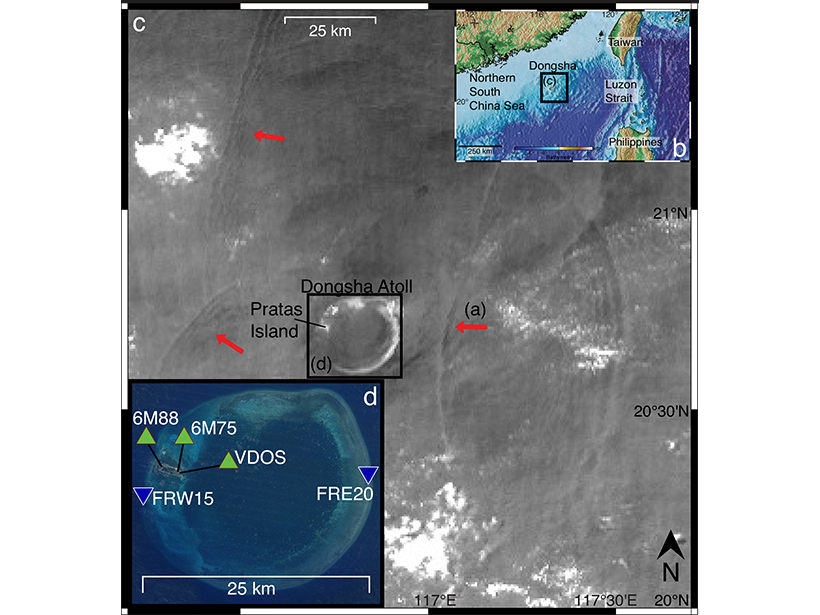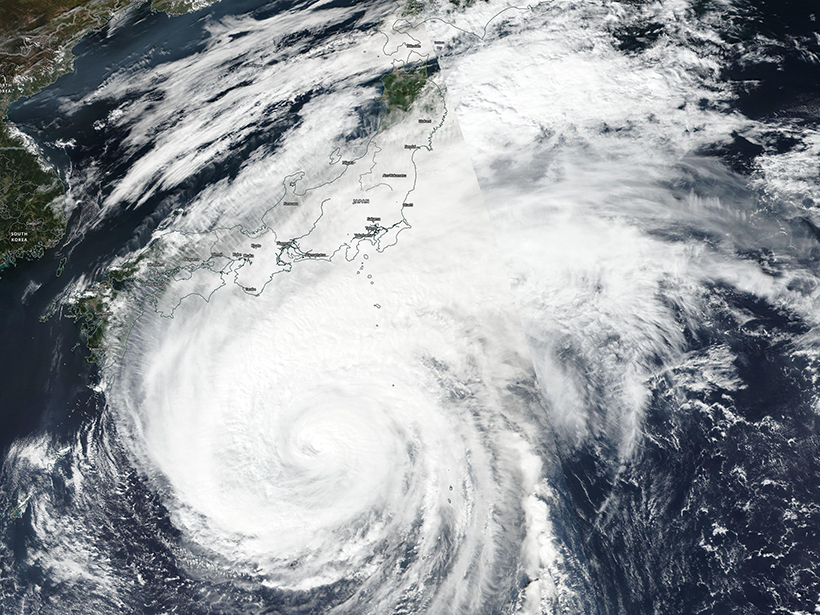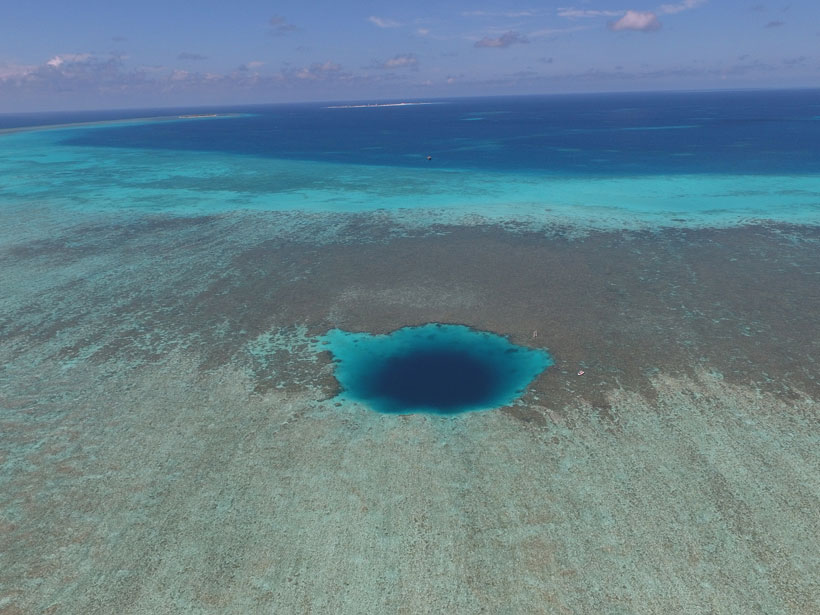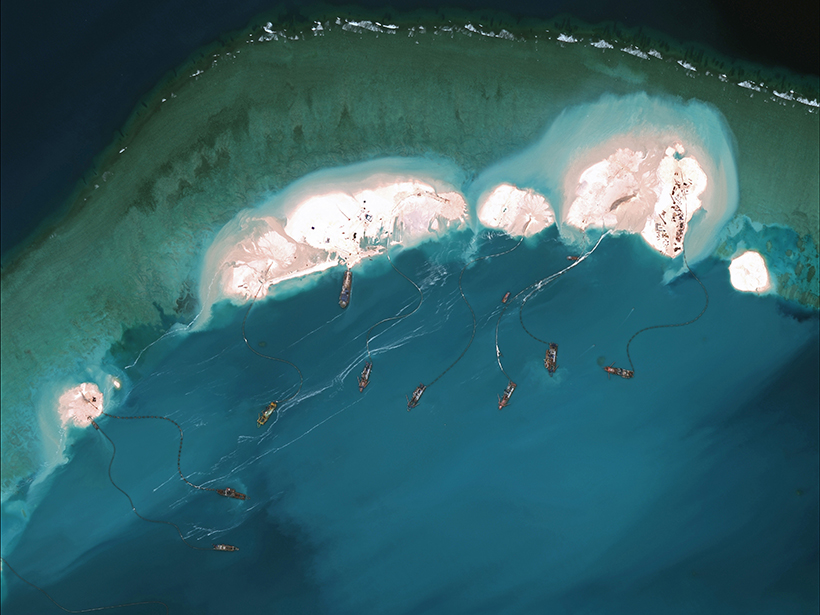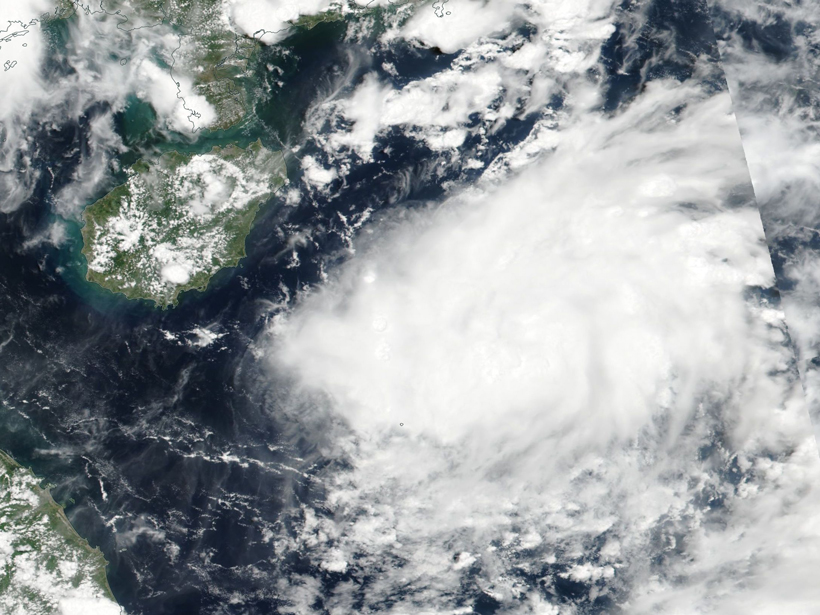Seismic recordings from the South China Sea indicate that subtle, daily tilting of shorelines due to passing internal ocean waves can be measured on land, promising new constraints on ocean dynamics.
South China Sea
Typhoons Getting Stronger, Making Landfall More Often
New research shows a growing threat from Pacific storms amid climate change.
El Ciclo del Carbono en el Agujero Azul Más Profundo de la Tierra
Científicos encuentran nuevos extremos mientras investigan el ciclo del carbono en el agujero azul de Yongle.
Carbon Cycling in the World’s Deepest Blue Hole
Scientists find new extremes as they research carbon cycling in the Yongle blue hole.
Island Building Alters Waters Leagues Away and for Years After
Quantifying the impacts of dredging through satellite remote sensing could serve as a valuable resource in future geopolitical disputes over contested waters.
Chaos Beneath a Calm Sea
Seismic data help reveal fine-scale wave breaking, instability and turbulence in the ocean interior.
Plumbing the Depths of the Marine Carbon Cycle
Scientists measure dissolved black carbon in South China Sea water samples to better understand the carbon cycle in the oceans, which absorb roughly half of all carbon emitted into the atmosphere.

